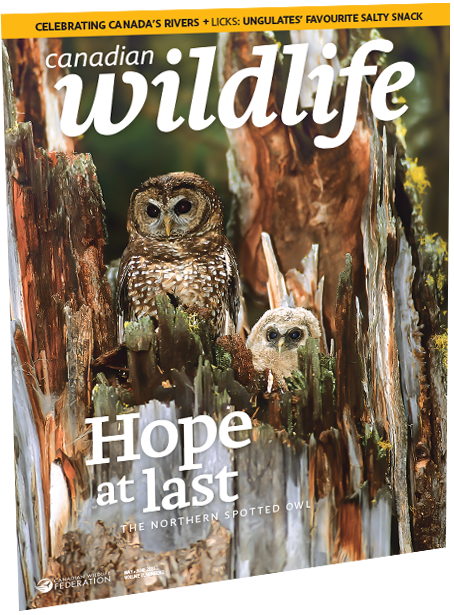Canadian cities are responsible for the deaths of millions of migratory birds each year. They don’t have to be
Life is hard for the average migratory bird. The extreme physical demands of twice-yearly voyages ranging thousands of kilometres over high mountain ranges into hard headwinds and harsh weather mean many deaths. Mortality rates when migrating between breeding and wintering grounds are usually six to 10 times higher than they are at the birds’ destinations. The situation is worse in North America than anywhere else in the world.
Some of the most devastating hazards are caused by humans: tall, brightly lit buildings, flares at gas plants, windfarms, transmission wires, and cellular and other communication towers are all dangerous to migrating birds; so of course are urban areas in general. Nowhere is this more obvious than in North America’s largest cities, many of which are in one (or more) of the continent’s four interwoven high-traffic migratory flyways. The combination has been deadly. Blame ALAN for much of it.

Artificial light at night, say the experts (who call it ALAN), is responsible for up to a billion birds dying from colliding with buildings in Canada and the United States every year. In addition, around coastal cities, seabirds are drawn inland and become stranded, disoriented, unable to return to their proper habitat. For those that are nocturnal voyagers, which include most songbirds, waterfowl and many shorebirds — their typically low flight altitudes make them more likely to be drawn and disoriented by the tall glowing buildings. In Toronto, the top victims include whitethroated sparrows, ruby-throated hummingbirds and at-risk species such as the wood thrush, eastern whippoorwill and Canada warbler.
For nearly three decades, an organization called FLAP Canada has been working to reduce the carnage. It can always use your help collecting victims, campaigning for building code changes (such as requiring bird-safe glass) and lobbying building owners to “flick off,” that is, do the right thing and turn out the lights. Cities are also critical to the survival of “migbirds” (another favourite term of the experts). Indeed, the most important resources needed for replenishment, rest and safety from predators, can often be more readily found in cities than elsewhere. (Some cities are so appealing to passing birds that they land and never leave, becoming resident instead of migratory.) A growing number of North American cities are recognizing this and acting, including the City of Ottawa, which announced last November it was embracing strategies to reduce collisions between birds and buildings and launching voluntary design guidelines for builders and property owners. It is a start.
There is much more that every urban dweller can do to aid migratory birds and, in doing so, also help resident populations of birds and make a more nature-friendly city that humans will enjoy as well. It means creating, conserving and enhancing natural habitat everywhere: private property, public parks, schoolyards, rights-of-way, shorelines, even rooftops. Not only birds will benefit. Embattled pollinators will too, as will we all. Further, research has shown that these efforts work best when the local population is engaged, be it through interpretive signage in busy bird areas, showcases and demonstration gardens or bringing volunteers together to create bird habitats that will provide food, water and shelter to key species and enliven neighbourhoods.

Reprinted from Canadian Wildlife magazine. Get more information or subscribe now! Now on newsstands! Or, get your digital edition today!





